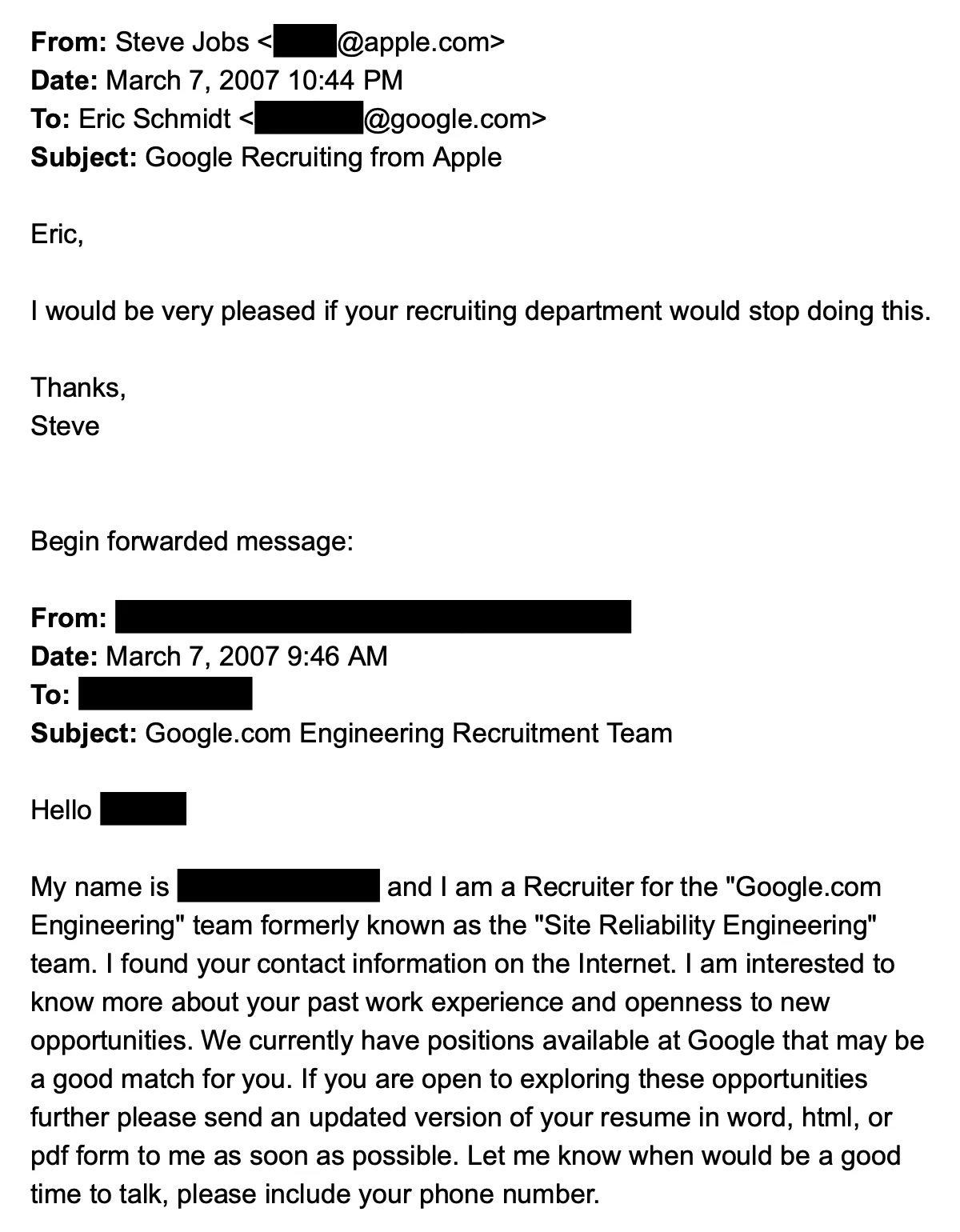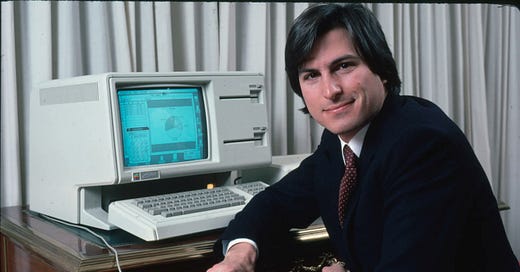What Happens When You Accidentally Email Steve Jobs about a Job at Google?
How to deal with mistakes at work
Mistakes at work are inevitable, but how you handle them can make all the difference. In this post, I'll share an unexpected story involving Steve Jobs, along with some of my own mistakes and the lessons I've learned from them.
A Mistaken Email to Steve Jobs
I recently stumbled upon an old email shared by
s. In this email, a recruiter accidentally sent an email to Steve Jobs, offering him a Site Reliability Engineer position at Google!

Yes, you read that right. Steve Jobs, the co-founder of Apple, received a Google job offer by mistake. The story didn't end well for the recruiter—Jobs forwarded the email to Eric Schmidt, who was Google’s CEO at the time, and the recruiter was fired within the hour.
This incident might seem like a rare, one-off thing, but it underscores an important lesson: mistakes at work can have significant consequences. However, the way we respond to them can often reshape our careers in unexpected ways.
My Own Work Mistakes
Everyone makes mistakes at work, including me. I’d like to share two of my most memorable mistakes and the valuable lessons they taught me.
Mistake #1: The Misleading Launch Email
One day, I prepared a product launch email intended for all the team leaders. But in my rush, I forgot to review the email before sending it out. Instead of sending my team’s launch doc, I mistakenly sent another team’s launch doc. It was embarrassing, to say the least.
Lesson learned: I now send a test email to myself first, no matter how urgent it is. This extra step ensures that the email is accurate and complete before it reaches a broader audience.
Mistake #2: The Code Review Disaster
While reviewing a teammate's code, I overlooked a minor change that had a massive impact—roughly 50 team experiments were deleted. Thankfully, it didn't affect production, but it wasted two weeks of work for the entire team.
Lesson learned: I now approach code reviews with much more caution, especially when dealing with changes that seem minor. There's a significant difference between code that doesn't work and code that breaks the system.
How to Recover from Mistakes at Work
Over time, I’ve developed a framework for dealing with mistakes at work. Here are three essential steps that help me (and can help you) turn missteps into growth opportunities:
Own it: Acknowledge your mistake without making excuses. Taking responsibility is the first step toward rebuilding trust.
Understand it: Dig deep into why the mistake happened. Was it a process flaw, a misunderstanding, or simply human error?
Improve: Implement systems to prevent similar mistakes in the future. This could mean adding an extra review step, setting up automated checks, or creating clearer guidelines.
The 'Fail to Learn' Culture at Google
At Google (at least in my team), we have a culture called 'Fail to Learn.' We believe that failing is part of the process, especially when tackling complex problems. Solving easy problems can deliver results, but it won’t create a major impact. To make a difference, you must tackle challenges that stretch your abilities—and often, failure is part of that journey.
Complex problems come with greater learning opportunities. When junior engineers face these challenges, it’s rare to get it right on the first attempt. If they do, the problem probably wasn’t complex enough, or the engineer should already be at a higher level.
At Google, we run countless experiments, and many of them fail. But that’s how we learn. Each failure becomes a chance to analyze, adapt, and innovate.
If we were handed all the answers, there would be no room to grow. It’s not just about fixing problems but understanding why they occur and finding new approaches.
Turning Failures into Growth
If you're given all the answers upfront, you have fewer chances to fail—and fewer chances to grow.
The next time you make a mistake, don’t let it define you. Let it refine you.




